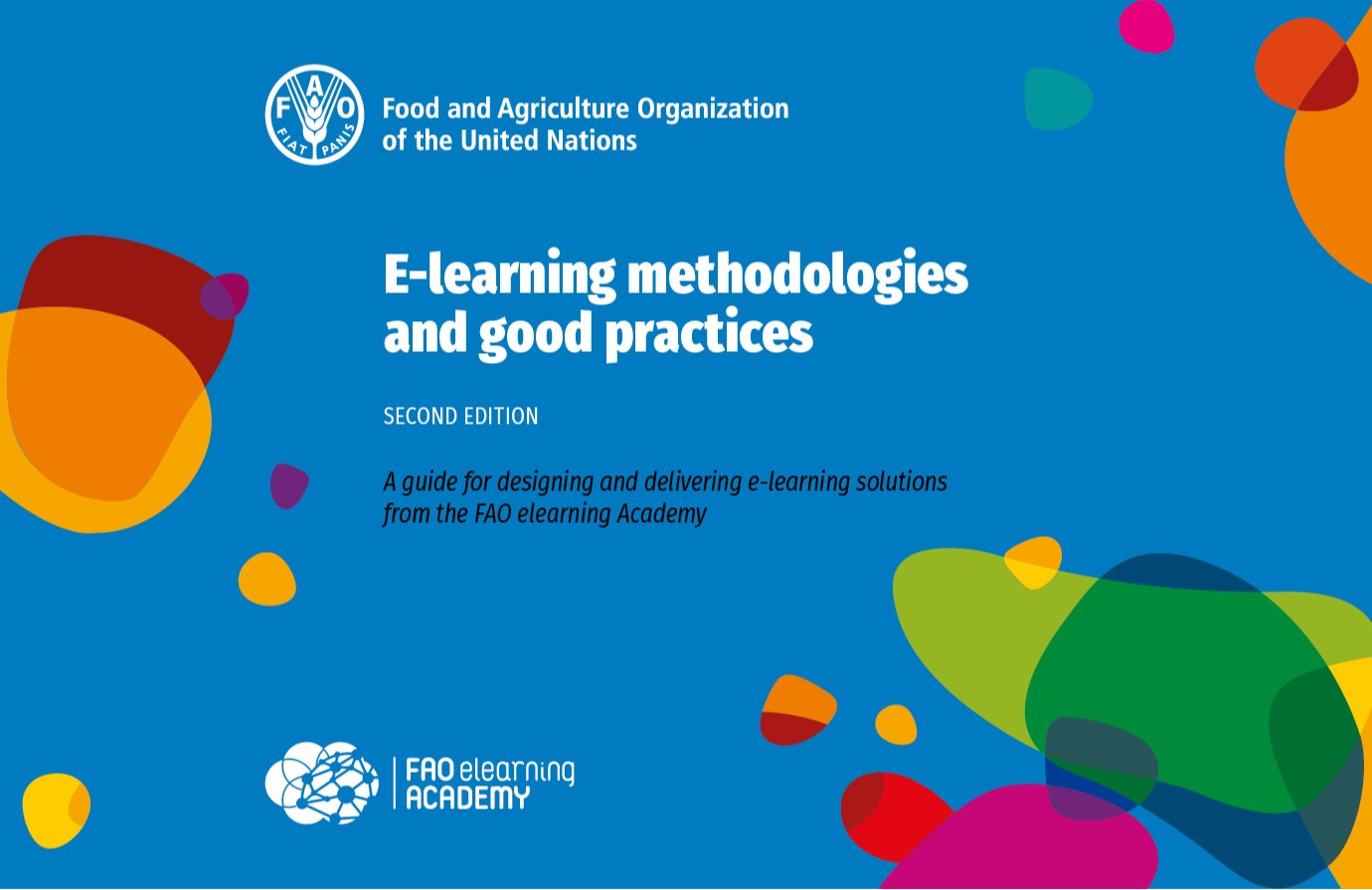Topic outline
The purpose of the guide is to provide guidance on designing and developing e-learning-based solutions for trainers and instructional designers who are new to e-learning design. The guide also provides basic concepts and information on the processes and resources involved in e-learning development, which may be of interest to human resource and capacity-development managers.
The content of the guide is based on consolidated instructional design models and learning theories and incorporates more than 15 years of experience of the FAO elearning Academy, including work practices, standards and quality criteria adopted for the delivery of learning programmes and self-paced e-learning courses in development contexts.

The guide is aimed at trainers, instructional designers, capacity-development professionals and anyone interested in starting an e-learning project, developing e-learning materials, delivering online facilitated courses and e-learning solutions suitable
for development contexts.
- What is needed to develop an e-learning project.
- Designing an e-learning project that matches the needs of the learners.
- Creating e-learning materials using different media and instructional techniques.
- Selecting authoring tools and learning platforms.
- Designing and facilitating online collaborative courses.
The online version of this course runs on the main web browsers. Preferably you should use Internet Explorer, Safari, Chrome and Firefox.
Digital certification
This course offers certification. You will get your digital badge upon passing a final exam after completing the course and achieving a grade of at least 75%. Please click on the button below to complete the exam, or refer to our Certification section to learn more.
Evaluate this course
We would be pleased to receive your evaluation of this course, to support us in improving future e-learning courses. Please click on the button below to answer the questions in the form. It should only take you a few minutes!
Structure of the guide
The guide is organized into four main parts:
- Part I provides an overview of the features and benefits of e-learning and describes the activities and resources needed to develop an e-learning project.
- Part II concerns the analysis of learning needs, the definition of learning objectives, the definition of the curriculum outline and the selection of instructional methods and delivery formats.
- Part III provides detailed guidance and examples on creating interactive content, including the use of instructional techniques, media, testing and authoring tools.
- Part IV provides an overview of how learning platforms can support course delivery, collaboration and communication between participants.
The guide includes illustrative examples, case-studies, job aids and checklists.
